|
|
We recently stood up a team of experts from across the agency to collect and analyze COVID-19-related impacts on the U.S. commercial seafood industry, including wild harvest and aquaculture. We are interested in learning about the virus' impacts on their employees, their business, the businesses they support, and the broader seafood supply chain.
We are also looking at impacts on the recreational, subsistence, non-commercial, and tribal fishing industries. With this effort, we are interested in assessing immediate and long-term needs to secure and enhance the resilience of the U.S. seafood and fisheries industries. We will continue to work with the Administration and Congress on this important, unprecedented COVID-19-driven effort.
Stakeholders interested in sharing information on the effects of COVID-19 on their businesses can submit that information to NMFS.COVID-19@noaa.gov.
|
|
Highlights
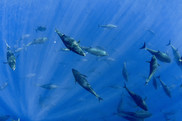
NOAA Fisheries announced measures that provide more fishing opportunities for vessels targeting Atlantic swordfish and some tuna species. We will continue under these measures to protect bluefin tuna from overfishing.
|
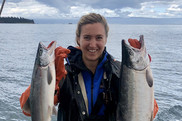
We are highlighting women who support electronic technologies in U.S. fisheries in a two-part series to celebrate Women’s History Month. Electronic monitoring and electronic reporting technologies are being developed to support science-based management decisions in commercial and recreational fisheries. Learn about nine women from around the country who are helping shape the future of electronic technologies in U.S. fisheries
|
|
|
Southeast
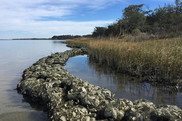
Each year, 80,000 acres of coastal wetlands in the lower 48 states are lost to development, erosion, sea level rise, and more. Living shorelines offer one method for preventing the loss of this valuable habitat. For more than 20 years, NOAA has partnered with the North Carolina Coastal Federation to create living shorelines.
|
|
|
Greater Atlantic
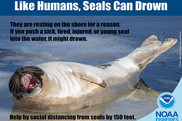
Social distancing has slowed the pace of society and encouraged more people to get outdoors. With springtime weather, there have been optimal opportunities throughout the Northeast for people to enjoy and explore local coastal habitats. At the same time that increasing numbers of people are heading outdoors, many species of seals, dolphins, and whales are also using these areas. We need to share the shore and coastal habitat with these animals, while also respecting their need for social distance from us.
|
Women’s History Month
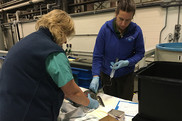
During Women's History Month we caught up with Kate Sampson, Sea Turtle Stranding and Disentanglement Coordinator for the Greater Atlantic Regional Fisheries Office, to learn more about the work she does to support NOAA Fisheries' mission.
|
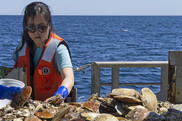
During Women’s History Month, the Northeast Fisheries Science Center talks with women scientists, asking them to share their science journey, advice for the next generation of women scientists, and more. Featured this week is Jui-Han, research biologist.
|
|
|
Upcoming Deadlines
WEBINAR POSTPONED- The Marine Fisheries Advisory Committee webinar, "How Do We Increase Consumption in the United States? Is It Time to Revisit the Idea of a National Seafood Council?", has been postponed. Any updates on rescheduling will be posted here in the coming months. For questions, please contact Adele Irwin (adele.irwin@noaa.gov).
April 1 Final Management Measures for the Atlantic Sea Scallop Fishery for the 2020 Fishing Year.
April 10 NOAA Seeks Public Comment on Revised Management Plan for Stellwagen Bank National Marine Sanctuary.
|
|
|
|